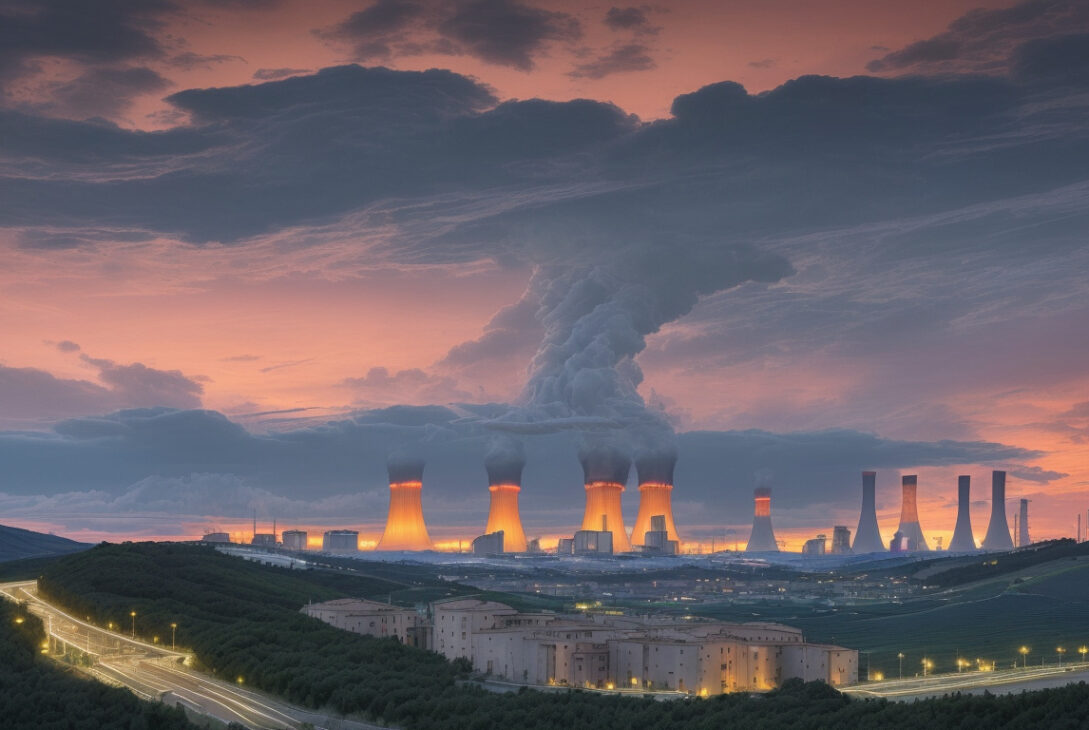Italy’s Government Bets on Unproven Nuclear Technology Despite Historical Resistance
By Carlo Martuscelli
Rome, August 1, 2025 — After more than three decades since Italy shuttered its last nuclear power plant, the government led by Prime Minister Giorgia Meloni is reigniting the nuclear debate by proposing a fresh national strategy centered on cutting-edge nuclear technologies. This renewed commitment to nuclear power departs sharply from Italy’s longstanding public opposition to nuclear energy, as expressed in referendums following the Chernobyl and Fukushima disasters.
A Shift Toward Next-Generation Nuclear Reactors
Prime Minister Meloni and her cabinet are advocating for the deployment of Small Modular Reactors (SMRs) and Advanced Modular Reactors (AMRs). These newly developed nuclear technologies are touted as safer, cleaner, and more adaptable than traditional large-scale nuclear plants. Speaking earlier this year, Meloni emphasized the necessity of making long-term energy decisions: “We need to restart the development of nuclear power, making a bet on mini-reactors that are safe and clean sources of energy.”
On July 30, Italy’s Environment and Energy Security Ministry announced that the law establishing the framework for restarting nuclear energy production had cleared its final institutional hurdle and was ready to be submitted to parliament for approval.
Environment Minister Gilberto Pichetto Fratin indicated at a July 16 event hosted by Confindustria, Italy’s principal business association, that if approved, the first SMR or AMR plants could become operational by the late 2020s or early 2030s. Government projections suggest nuclear fission energy could supply between 11% and 22% of Italy’s national electricity demand by 2050. —
Historical Context: Referendums and Public Opposition
Italy’s nuclear trajectory was decisively altered after the 1986 Chernobyl disaster, which led to a 1987 referendum banning nuclear power. All existing plants were closed by 1990. In 2011, following the Fukushima accident in Japan, Italians again voted to reject nuclear power in a subsequent referendum, solidifying the public’s resistance.
Critics note that Meloni’s government is ignoring a clear expression of the popular will. Enrico Cappelletti, a member of parliament for the Five Star Movement, commented, “This government has demonstrated that they aren’t taking into account what has been a very clear expression of the popular will.”
Beyond democratic objections, opponents argue the new nuclear plan will be a costly, slow process that risks increasing electricity bills, which are already among the highest in Europe. However, the government counters that nuclear power is essential to meeting Italy’s expected doubling electricity demand by 2050 and to ensuring energy security.
Economic and Industry Perspectives
The Confindustria event revealed significant industry interest, given the potentially lucrative market for nuclear technology in Italy. An Ernst & Young (EY) study estimates Italy’s nuclear market might reach €50 billion by mid-century.
Several major Italian firms, including Enel (the utility giant), Leonardo (an aerospace and defense company), and Ansaldo Energia (an energy engineering firm), have formed a consortium named Nuclitalia to explore viable nuclear energy options. Italy’s June decision to join the French-led European Nuclear Alliance also highlights the country’s alignment with broader EU nuclear energy initiatives.
Minister Fratin underscored the importance of nuclear power’s consistent output in complementing intermittent renewable energy sources, framing nuclear as indispensable to Italy remaining a prosperous nation.
The Debate Over Small Modular Reactors and Advanced Modular Reactors
The government’s nuclear push largely hinges on next-generation reactors—SMRs and AMRs—that promise to overcome some limitations of conventional plants. SMRs use factory-produced, miniaturized components aimed at lowering costs and enhancing safety. AMRs power themselves using spent nuclear fuel, potentially reducing waste.
Despite this optimism, neither SMRs nor AMRs have been built operational in Western Europe, and prior attempts in the U.S. have faltered, such as the abandonment of an SMR project due to escalating costs.
Stefano Monti, president of the European Nuclear Society, stresses that nuclear power is vital for providing steady baseload energy alongside renewables and acknowledges the political advantage of framing this technology as a departure from the past nuclear programs barred by earlier referendums.
Nonetheless, Monti concedes that traditional nuclear plants—with their own cost overruns—might still play a role, and that initial government subsidies may be needed.
Critics like Katiuscia Eroe from the climate NGO Legambiente argue that nuclear cannot compete economically with renewables when considering the high upfront investments. Michele Governatori, an independent academic and climate think tank member, doubts any full-scale nuclear return will materialize, warning that the nuclear debate could be a political distraction from accelerating renewable energy deployment.
Challenges Ahead: Costs, Permitting, and Political Hurdles
Italy faces a significant backlog—estimated at 150 gigawatts—of renewable energy projects stalled by administrative and regional permitting delays. Governatori suggests that promoting nuclear power could allow the government to deflect pressure on these contentious permitting issues, which often involve local opposition (commonly referred to as NIMBYism).
There are also complex lobbying dynamics at play. Established energy giants tend to favor nuclear investments, while renewable energy projects are often developed by smaller firms with less direct political influence.
Economic Outlook: Potential Savings or Increased Costs?
The government’s 2024 energy and climate plan forecasts that nuclear power could save Italy roughly €17 billion compared to pursuing an energy mix relying solely on renewables. However, a recent report by Italy’s central bank indicates that while nuclear energy might stabilize electricity prices, it is unlikely to generate significant cost savings for consumers.
In summary, Italy’s nuclear energy revival represents a high-stakes gamble on emerging technologies with uncertain economic and political outcomes. As the nation debates its energy future, the conflict between historical public opposition and the pressing demands of climate change and energy security remains unresolved.
This article was originally published by POLITICO on August 1, 2025.










